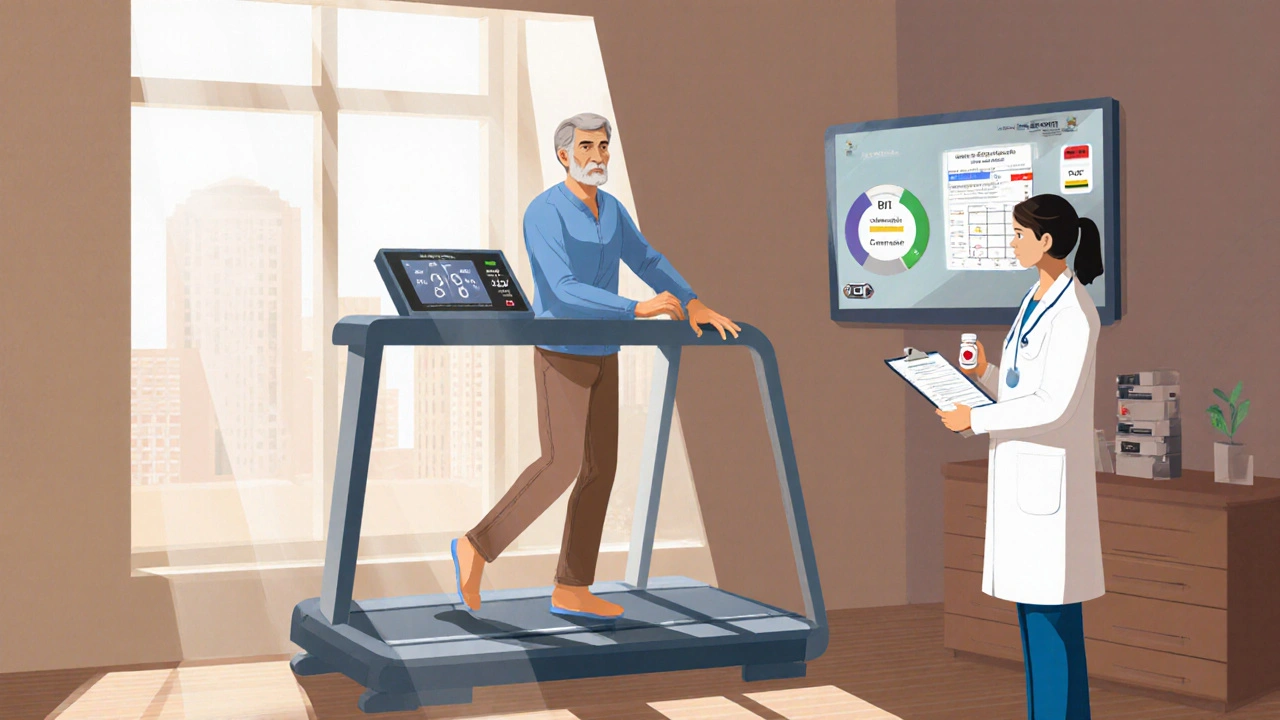Intermittent Claudication Therapy: What Works and Why
When dealing with intermittent claudication therapy, a set of treatments aimed at relieving leg pain caused by reduced blood flow during walking. Also known as claudication management, it combines lifestyle changes, medication, and possible procedures to improve circulation.
Understanding the root cause is crucial. Most patients have peripheral arterial disease, a narrowing of arteries in the legs that limits oxygen delivery during activity. This condition sets the stage for the pain episodes we call claudication, and it guides every therapeutic decision.
Core Components of an Effective Plan
The backbone of any solid plan is supervised exercise, structured walking or treadmill sessions overseen by a vascular specialist or physiotherapist. Research shows that regular, progressive walking improves collateral circulation and can delay the need for surgery. The program typically starts with short intervals—walk until the pain begins, rest, then repeat—gradually extending the walking time as tolerance increases.
Medication plays a supporting role. Cilostazol, an antiplatelet drug that also widens blood vessels, is the most prescribed agent for intermittent claudication. It reduces pain severity and boosts walking distance for many users. However, it isn’t suitable for everyone; patients with heart failure must avoid it, and dosage adjustments may be needed for certain liver conditions.
When exercise and meds don’t deliver enough relief, invasive options are considered. Angioplasty, a minimally invasive procedure that balloons open blocked arteries and often places a stent, can restore blood flow quickly. While effective, it carries risks such as artery recoil or restenosis, so clinicians reserve it for those with severe blockages or failed conservative therapy.
Another pillar is lifestyle modification. Smoking cessation, a heart‑healthy diet, and weight control directly influence disease progression. Patients who quit smoking often see a marked slowdown in artery narrowing, and a diet rich in omega‑3 fatty acids can improve endothelial function.
Putting these pieces together creates a clear semantic chain: intermittent claudication therapy encompasses supervised exercise; effective therapy requires lifestyle modification; medications like cilostazol influence therapy outcomes; and angioplasty offers a procedural boost when needed. Each element connects back to the central goal—keeping you on your feet longer.
In practice, a typical timeline starts with an initial assessment, prescription of cilostazol if appropriate, and enrollment in a supervised walking program. Follow‑up visits gauge progress, adjust meds, and decide if angioplasty or surgical bypass is warranted. Patients often report noticeable improvements within 8–12 weeks of consistent exercise.
For those who wonder whether they’ll need surgery, the answer is often “not yet.” Most individuals can achieve meaningful gains through non‑invasive means, especially when they stick to the exercise schedule and avoid tobacco. Even when procedures become necessary, having a solid foundation of exercise and medication improves post‑procedure recovery.
Below you’ll find a curated set of articles that dig deeper into each of these areas—step‑by‑step guides on starting a walking program, detailed looks at cilostazol dosing, patient stories about angioplasty outcomes, and advice on quitting smoking while managing leg pain. Use them as a roadmap to build a personalized plan that fits your lifestyle and health goals.

